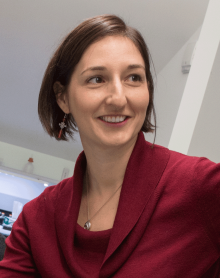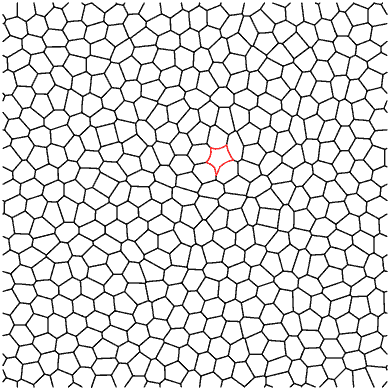Associate Professor M. Lisa Manning
How long have you been at SU?
Since August 2011

What school/college/department do you work in?
Department of Physics, College of Arts and Sciences
Briefly describe your area of research:
The Manning group uses theoretical and computational tools to understand collective motion in disordered, non-equilibrium “materials”, where “materials” range from granular solids, to foams, to groups of cells in biological tissues engaged in processes like wound healing, embryonic development, and cancer metastasis.
Describe which SU’s Research Computing technologies and resources you currently use:
I currently use OrangeGrid, and I am about to work with ITS collaborators to set up a virtual machine inside Crush. I also have a small 144 CPU cluster housed at the green data center.
How do these resources contribute to the advance of research on the SU campus?

Credit: Max Dapeng Bi and M. Lisa Manning, Syracuse University
We used OrangeGrid to conduct many simulations of biological tissues. This simulation data helped us to make an exciting prediction about cells in the lungs of asthma patients, which we verified in collaboration with scientists at the Harvard School of Public Health, in work that was just accepted to Nature Materials.
We have also used this data in several papers that are submitted or about to be submitted that discuss how tissues can transition from liquid-like to solid-like behavior, which imply new ways of thinking about wound healing and cancer. This has generated preliminary data for a grant proposal to the National Cancer Institute.
Another one of my students is just starting to use OrangeGrid to study flow and failure in granular materials, which are important in nature (e.g. earthquake faults) and industry (e.g. pharmaceutical processing). We use our CPU cluster housed at the GDC for all other simulation work.
Learn More:
Press Release | Manning Web site
